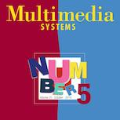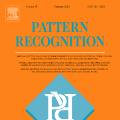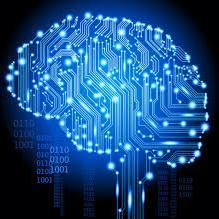人工智能 | SCI期刊专刊信息5条
人工智能
Cognitive Systems Research
Special Issue on "Artificial Cognitive Systems for Assistance in Traffic, Industry, and Automatization"
全文截稿: 2019-10-15
影响因子: 1.425
CCF分类: 无
中科院JCR分区:
• 大类 : 医学 - 4区
• 小类 : 计算机:人工智能 - 4区
• 小类 : 神经科学 - 4区
网址: http://www.journals.elsevier.com/cognitive-systems-research/
This special issue of "Cognitive Systems Research“ invites submissions addressing questions on how artificial cognitive systems for assistance in traffic, industry, and automatization should and could be designed, developed, and evaluated. Technical assistance systems, that is, artificial systems that generally support or help human users in specific tasks, have significantly advanced in the last years as they are becoming more and more widespread. For example, all modern vehicles are equipped with intelligent driver assistance systems, mobile devices feature voice-based personal assistants, operators in air traffic control are supported by technical systems with different degrees of autonomy, and workers in manufacturing settings are expected to collaborate with robots and automation system interfaces. As a result, humans come to interact with technical assistance systems on a daily basis, in everyday and professional life. This raises important questions in two inter-related domains specifically addressed with this special issue:
1. How to analyze and model the interaction process between users and assistance systems? How do humans understand, utilize and rely on them? And how should assistance systems present themselves in continuous communication with their users?
2. What key features and abilities do cognitive assistance systems need to have? How can they represent, reason about, and predict the relevant states of the user, the situation and the current task at a required level of detail? And how can modern approaches to learning and adaptation yield better cognitive assistance systems?
A considerable body of research has looked at these issues based on long established methods from fields such as planning, automated reasoning, or cognitive modeling. These classical cognitive approaches are increasingly complemented, if not replaced, by new kinds of assistance systems relying on the use of data-based machine learning. However, it is an open question which kind of methods, or combination thereof, will yield the machine intelligence that is required for robust, efficient and acceptable assistance with human users. Very recent approaches are starting to return to more cognitive, model-based approaches and their integration with data-based techniques to enable, e.g., human-like generalization, zero-shot learning, or more intuitive human-machine interaction. At the same time, the human-aware design of such systems and the need to guarantee (re-)liable A.I.-based assistance systems, both at the individual scale as well as at the societal scale, is reflected in a burgeoning interest in transparency and explainability.
We invite submission of articles presenting original approaches, studies, or findings on how cognitive assistance systems for traffic, industry, or automatization should and could be designed, developed, and evaluated. Submissions of new research ideas are encouraged in this special issue, related but not limited to the following topics:
Situation awareness in dynamic environments with human users/operators
Architectures and techniques for robustness and reliability
Learning and adaptation in assistance systems
Deep cognitive or affective user models
Measurement or recognition of cognitive load, emotions, or affect
Models of planning and decision-making for assistance
Shared or adjusted autonomy in human-agent/robot teamwork
Hand-over of control
Mixed-initiative, multimodal communication and collaboration
Empirical studies on user acceptance and usability of assistance systems
Evaluation measures and methodologies for cognitive assistance systems
Models for human-machine collaboration
User trust in assistance systems
人工智能
Pattern Recognition Letters
Call for papers for Special Issue on Digital Anastylosis of Frescoes challeNgE (DAFNE)
全文截稿: 2020-03-31
影响因子: 1.952
CCF分类: C类
中科院JCR分区:
• 大类 : 工程技术 - 3区
• 小类 : 计算机:人工智能 - 3区
网址: http://www.journals.elsevier.com/pattern-recognition-letters/
To highlight the importance of cultural heritage assets conservation, and promoting restoration of artworks that would otherwise be lost forever, we propose an international challenge to look for solutions that support image reconstruction after destructive phenomena, such as earthquakes or wars. In particular, we focus on reconstruction of frescoes and deal with anastylosis, which is an archaeological term for a reconstruction technique where ruined buildings/monuments are restored using the original architectural elements to the greatest degree possible.
The current state-of-the-art research in virtual anastylosis presents several trials and case studies based on a combination of different digital measurements and modelling techniques, accompanied by the interpretation of data coming from documentary sources. Goal of this Special Issue is to collect the best solutions to virtually recomposing destroyed frescoes, starting from the digitalization of their broken collected elements. In this framework, the restoration could be interpreted as a very challenging 'puzzle' formed by original fragments of the destroyed fresco.
Critical issues are due to: i) the number of randomly mixed fragments is usually huge; ii) fragments are mostly corrupted, and with general irregular shapes; iii) mismatch of the boundaries of the collected eroded pieces; iv) some pieces have gone irretrievably lost; v) due to extreme fragmentation, presence of spurious/distractors elements, due to pieces of different frescoes also involved in the building collapse.
Contributors to this Special Issue will be entitled, at their discretion, to use a number of different cases of destroyed well-known frescoes that have been simulated in order to populate a dataset containing fragmented pieces, useful for the development and testing phases of the challenge. Five different parameters are used for the generation of elements: the number of fragments, their average size, the percentage of missing parts, the percentage of spurious fragments, and the average ratio between the fragment area after the erosion and the original area in the plane tessellation.
This initiative can bring to different strategies. The Pattern Recognition community is involved since 1968 and will keenly participate applying advanced computer techniques such as Machine Learning and Deep Learning. But also some interactive solutions can be conceived, in particular involving autistic subjects, favoring their social inclusion in productive activities, exploiting their peculiarities and abilities, and promoting and appreciating their potential.
Prospective authors can submit their results related to a solution that reassembles a specific set of elements, discarding the spurious ones. The best papers describing methods and the results will be published, after a peer review, in this Special Issue.
Topics of interest include but are not limited to:
- Consistent image completion
- General wall painting reconstruction algorithms
- Image reassembling using deep learning techniques
- Interactive solutions for image restoration
- Patch match image editing and synthesis
- Re-colorization and art restoration from incomplete data
人工智能
Pattern Recognition Letters
Call for paper: Virtual Special Issue “Biometrics in Smart Cities: Techniques and Applications (BI_SCI)”
全文截稿: 2020-05-20
影响因子: 1.952
CCF分类: C类
中科院JCR分区:
• 大类 : 工程技术 - 3区
• 小类 : 计算机:人工智能 - 3区
网址: http://www.journals.elsevier.com/pattern-recognition-letters/
Smart Cities aim at improving the daily life of the citizens, by upgrading the services in terms of mobility, communications and power efficiency. Also, by measuring and acquiring the habits of a specific subject, it is meant to offer specific user-oriented services. In this scenario, biometric recognition covers a privileged role. Researchers worldwide agree with the fact that biometric credentials are difficult to be stolen and do not need to be remembered, so making them suitable for on-the-move authentication or video surveillance applications in smart cities environments.
In order to be compliant with requirements of a really smart scenario, biometric recognition must be non-intrusive and transparent to the user, being also able to acquire data and information in ”in-the-wild” environment, thus providing a natural tool to customize the surrounding environment to user needs and attitudes.
Strong biometric traits like fingerprint or palmprint may work a in very limited range of possible applications. Conversely, contactless biometric traits, and more in particular soft biometrics, still represent an unexplored field of research in this sense.
The ever-increasing number of surveillance cameras everywhere and the unrestrainable growth in usage of wearable devices implies the number of facial images and video available will grow exponentially. These conditions pose the premises for a wide range of application fields dealing with tracking and pose estimation of people for gait and gender recognition, person re-identification in adverse and crowded scenes, biometric data fusion to improve recognition accuracy and so on. Recent deep neural network models have shown a significant improvement on still images and video sequences in these areas, but a wide set of open problems persists and to which solutions still have not been clearly defined.
The objective of this virtual special issue is to solicit and publish the latest advances on this topic which includes, but are not limited to, the following:
Contactless biometric recognition suitable for smart environments;
Face recognition in the wild;
Pose estimation and gait recognition;
Person re-identification in surveillance;
Voice recognition;
Liveness/Spoofing Detection for biometric attacks;
Continuous biometric authentication approaches;
Cloud-based biometrics databases;
Biometric Access Control to cloud services;
Biometric Systems for Cloud-based Architectures;
Mobile Biometrics and Cloud Computing;
Cloud-based Communication Protocols for Biometric Systems;
Biometric-based customized content presentation;
Biometric Security in smart environments.
Bio signal Security
Bio signal Steganography
Data Hiding
人工智能
Pattern Recognition Letters
Special issue on Cross-Media Learning for Visual Question Answering (VQA)
全文截稿: 2020-06-05
影响因子: 1.952
CCF分类: C类
中科院JCR分区:
• 大类 : 工程技术 - 3区
• 小类 : 计算机:人工智能 - 3区
网址: http://www.journals.elsevier.com/pattern-recognition-letters/
Visual Question Answering (VQA) is a recent hot topic which involves multimedia analysis, computer vision (CV), natural language processing (NLP), and even a broad perspective of artificial intelligence, which has attracted a large amount of interest from the deep learning, CV, and NLP communities. The definition of this task is shown as follows: a VQA system takes a picture and a free, open-ended question in the form of natural language about the picture as input and takes the generation of a piece of answer in the form of natural language as the output. It is required that pictures and problems should be taken as input of a VQA system, and a piece of human language is required to be generated as output by integrating information of these two parts. For a specific picture, if we want that the machine can answer a specific question about the picture in natural language, we need to enable the machine to have certain understanding of the content of the picture, and the meaning and intention of the question, as well as relevant knowledge. VQA relates to AI technologies in multiple aspects: fine-grained recognition, object recognition, behavior recognition, and understanding of the text contained in the question (NLP). Because VQA is closely related to the content both in CV and NLP, a natural QA solution is integrating CNN with RNN, which are successfully used in CV and NLP, to construct a composite model. To sum up, VQA is a learning task linked to CV and NLP.
The task of VQA is rather challenging because it requires to comprehend textual questions, and analyze visual questions and image elements, as well as reasoning about these forms. Moreover, sometimes external or commonsense knowledge is required as the basis. Although some achievements have been made in VQA study currently, the overall accuracy rate is not high as far as the effect achieved by the current model is concerned. As the present VQA model is relatively simple in structure, single in the content and form of the answer, the correct answer is not so easy to obtain for the slightly complex questions which requires more prior knowledge for simple reasoning. Therefore, this Special Section in Journal of Visual Communication and Image Representation aims to solicit original technical papers with novel contributions on the convergence of CV, NLP and Deep Leaning, as well as theoretical contributions that are relevant to the connection between natural language and CV.
Topics
The topics of interest include, but are not limited to:
Deep learning methodology and its applications on VQA, e.g. human computer interaction, intelligent cross-media query and etc.
Image captioning indexing and retrieval
Deep Learning for big data discovery
Visual Relationship in VQA
Question Answering in Images
Grounding Language and VQA
Image target location using VQA
Captioning Events in Videos
Attention mechanism in VQA system
Exploring novel models and datasets for VQA
人工智能
Pattern Recognition Letters
Special Issue on Advances in Human Action, Activity and Gesture Recognition (AHAAGR)
全文截稿: 2020-06-30
影响因子: 1.952
CCF分类: C类
中科院JCR分区:
• 大类 : 工程技术 - 3区
• 小类 : 计算机:人工智能 - 3区
网址: http://www.journals.elsevier.com/pattern-recognition-letters/
The goal of this Special Issue onAdvances on Human Action, Activity and Gesture Recognition (AHAAGR)is to gather the most contemporary achievements and breakthroughs in the fields of human action and activity recognition under one cover in order to help the research communities to set future goals in these areas by evaluating the current states and trends. Especially, due to the advancement of computational power and camera/sensor technology, deep learning, there has been a paradigm shift in video-based or sensor-based research in the last few years. Hence, it is of utmost importance to compile the accomplishments and reflect upon them to reach further. This issue is soliciting original & technically-sound research articles with theoretical & practical contributions from the computer vision, machine learning, imaging, robotics, & AI communities.
Topics of interest include (but are not limited to):
Human action/activities/gesture recognition from video or other relevant sensor data
Large datasets on action/activity/gesture recognition
Multi-sensor action/activity/gesture recognition
Action/activity/gesture recognition from skeleton data, depth map.
Deep learning and action recognition
Action localization and detection; Action sequence generation/completion
Anomaly detection from surveillance videos; Action recognition in Robotics
Hand gesture recognition for virtual reality and other applications
Crowd behavior analysis and prediction from video sequences
Human behavior analysis and recognizing social interactions
Behavior recognition based on bodily & facial expressions
Applications and future trends of action/activity/gesture recognition
广告
登录查看更多
相关内容
多媒体系统(MS)期刊详细介绍了多媒体计算,通信,存储和应用的各个方面的创新研究思想,新兴技术,最新方法和工具。它包含理论,实验和调查文章。多媒体系统的覆盖范围包括:在计算机系统中集成数字视频和音频功能;多媒体信息编码和数据交换格式;数字多媒体的操作系统机制;数字视频和音频网络与通信;存储模型和结构;用于支持多媒体应用程序的方法、范式、工具和软件体系结构;多媒体应用程序和应用程序接口,以及多媒体终端系统架构。
官网地址:http://dblp.uni-trier.de/db/journals/mms/
A Survey of Reinforcement Learning Techniques: Strategies, Recent Development, and Future Directions
Arxiv
80+阅读 · 2020年1月19日
Arxiv
14+阅读 · 2018年1月24日





